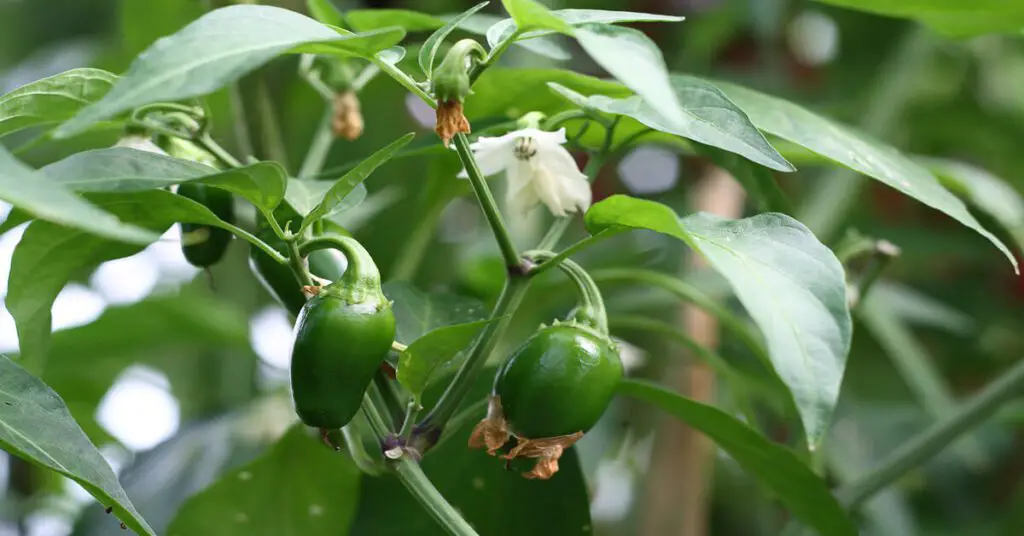When it comes to the flavorful world of chili peppers, the selection is vast and varied. Two peppers that often get highlighted in this colorful array are the Jalapeno and Serrano peppers.
These two peppers share a common heritage – they hail from Mexico and belong to the Capsicum genus. Despite their shared origins, these peppers differ significantly in their heat levels and use in cooking.
Understanding Jalapeno Peppers: Heat, Flavor, and Uses

Jalapeño peppers, named after the Mexican town of Xalapa, are popular in Mexican and Tex-Mex cuisines. A distinguishing feature of jalapenos is their size – they are often larger and plumper compared to many other chili varieties.
Jalapeno peppers rank between 2,500 and 8,000 Scoville Heat Units (SHU) on the Scoville scale, which measures the spiciness of peppers. This gives jalapenos a milder heat level that many find manageable and enjoyable.
Beyond their heat, jalapenos offer a distinct, crisp flavor that lends well to various dishes. Jalapeno poppers – stuffed with cheese and breaded – are a popular appetizer. At the same time, jalapeno peppers are often used to spice up salsas, chili con carne, and various other recipes.
Serrano Peppers: A Step Up in Heat

We find the spicier Serrano peppers on the other side of our comparison of Serrano vs. Jalapeno. Serrano peppers, named after the mountainous regions they originate from in Mexico, are typically smaller and thinner than jalapenos.
With a Scoville rating ranging from 10,000 to 23,000 SHU, Serrano peppers are generally 2-4 times hotter than Jalapeno peppers. For those seeking a spicier kick, Serranos may be the perfect choice.
Serrano peppers have a slightly brighter and more savory flavor than jalapenos. They are often used fresh in salsas, marinades, and sauces, where their potent heat can shine.
Choosing Between Jalapeños and Serranos
When selecting between Jalapeno and Serrano peppers, the key differences lie in their heat levels and flavor profiles.
With their higher heat level, Serrano peppers are a popular choice for those seeking a spicy kick. On the other hand, Jalapenos offer a more manageable heat and a unique, crisp flavor, making them a versatile addition to many dishes.
When a recipe calls for Serrano peppers but only jalapenos are available, keep in mind that Serrano peppers are significantly hotter. You may need to adjust the quantity to match the desired heat level.
Growing Serrano vs. Jalapeño Peppers

Cultivating Jalapeno Peppers
Growing Jalapeno peppers can be a rewarding experience for novice and seasoned gardeners. These plants prefer well-drained, fertile soil and plenty of sunlight. With a growing season of 70-80 days, Jalapeno pepper plants start bearing fruit early, offering a steady supply throughout the summer.
Jalapeno peppers turn from green to red as they mature. While they can be harvested at any stage, remember that the longer they stay on the plant, the hotter they become.
Growing Serrano Peppers
Serrano pepper plants require conditions similar to Jalapenos – well-drained soil, ample sunlight, and regular watering. However, their growing season is slightly longer, typically around 90 days.
Like Jalapenos, Serrano peppers start green and turn red as they mature. They can be harvested at any stage based on your heat preference. A unique aspect of growing Serrano peppers is their high yield. Despite their smaller size, a single Serrano plant can produce impressive peppers.
Conclusion
Whether you prefer the milder Jalapeno or the hotter Serrano largely depends on your tolerance for spice and the flavor profile you seek.
Remember, peppers can vary in heat, even within the same type, so always taste test before adding to your dish. Whichever pepper you choose, Jalapenos and Serranos both offer a vibrant addition to your culinary creations.


